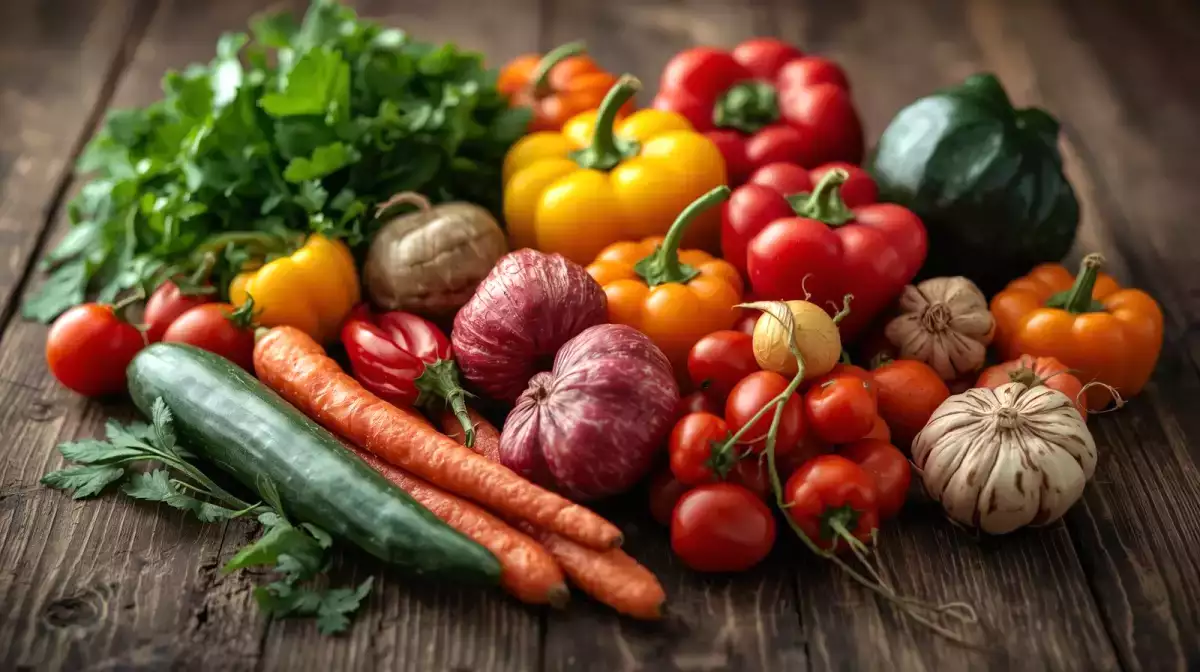To get enough fiber in your diet, here are the vegetables to choose (and how to cook them well)

We know they're good for us, but we often forget just how much: fiber is a true ally of well-being. It regulates digestion, helps prevent chronic disease and even helps control hunger.
Yet most of us consume far too little fiber. And contrary to popular belief, simply "eating more vegetables" is not enough to achieve the recommended intake.
So which vegetables should you choose to fill up on fiber? And how to prepare them to get the best out of them? Here's the complete guide to boosting your plate naturally.
First of all, what exactly are fibers?
Dietary fibers are plant components that our bodies do not digest. Unlike conventional carbohydrates, they pass through the digestive system without being broken down, helping to cleanse and regulate transit.
There are two main types of fiber:
- Soluble fibers, which dissolve in water and form a sort of gel in the intestine. They slow digestion, lower cholesterol and stabilize blood sugar levels. They are found mainly in fruits, vegetables, legumes and oatmeal.
- Insoluble fiber, which increases stool volume and stimulates transit. It's hidden in wholegrain cereals, nuts and certain vegetable skins.
Both are essential and complement each other perfectly. French health authorities recommend consuming 25 to 30 grams a day, but most adults only reach an average of 20 grams.
Why increasing fiber is an excellent idea
More than just a nutritional "plus", fiber has concrete effects on health:
- It promotes healthy digestion and prevents constipation.
- It supports the heart, helping to regulate cholesterol and blood pressure.
- They help you manage your weight better, as they keep you fuller for longer.
- They reduce the risk of chronic diseases, including type 2 diabetes and certain cancers, particularly colon cancer.
According to a study published in The Lancet, people who consume at least 25 to 29 g of fiber a day see their risk of cardiovascular disease, hypertension or diabetes reduced by 15 to 30% compared to those who consume less than 15 g.
A small change on the plate, therefore, for a big long-term benefit.
The most fiber-rich vegetables (and how to cook them)
Good news: there's no need to count grams. Just choose the right vegetables and include them regularly in your meals. Here are the ones that contain the most fiber:
World champions in fiber:
- Peas - 5 g per 100 g (5%): delicious in risotto or a cold salad.
- Artichoke - 5 g per 100 g (5%): steamed or roasted, it's a mine of fiber and antioxidants.
- Avocado - 4 g per 100 g (4%): on toast, in a salad or in a smoothie for a creamy boost.
- Brussels sprouts and kale - rich and satiating, perfect for oven-roasting or sautéing.
- Sweet potatoes - their sweetness appeals to everyone, especially in purées or soups.
- Beet - raw, grated or baked, they combine fiber and antioxidants.
- Carrot and broccoli - a classic duo that lends itself to all kinds of preparations.
- Pumpkin - its melt-in-the-mouth texture makes it an ideal ingredient for soups and gratins.
The ones we like, but with less :
- Tomatoes, cucumbers, peppers - hydrating, but not very fibrous.
- Mushrooms and spinach - rich in minerals, but supplement with other sources.
- Lettuce and cauliflower - excellent in salads or steamed, but no champions when it comes to fiber.
Tip: combine different types of vegetables to balance your intake. For example, mix grated carrots and chickpeas in a salad, or serve pumpkin gratin with sautéed kale.
Raw or cooked: what's the difference?
Cooking has a real impact on fiber content.
Heat, especially under pressure (as in a pressure cooker), can slightly degrade their structure. This doesn't make them useless, but they do become a little less effective for transit.
The best cooking methods :
- Baked or roasted : vegetables retain their fibers and aromas better.
- Gentle steaming: preserves nutrients and texture.
- Microwave, short-time cooking: a fast option that limits fiber loss.
Vegetable juices, on the other hand, are deceptive: they retain vitamins, but eliminate almost all fiber. If you like juices, add the pulp to recover some of it.
Also consider other sources
Vegetables aren't the only stars. To reach your target of 25 to 30 g of fiber per day, you can also count on :
- Legumes (lentils, chickpeas, kidney beans)
- Whole fruit (pears, apples, raspberries, bananas)
- Wholegrain cereals (brown rice, quinoa, oats, wholemeal bread)
- Seeds (chia, flax, sunflower, pumpkin)
- Dried fruit (figs, apricots)
A breakfast of granola and red fruit, a lunch of lentil salad and roasted vegetables, a dinner of stir-fried vegetables and brown rice... and you'll easily reach your goal without even thinking about it.
In a nutshell
Fiber is much more than just a slimming aid. It's the silent guardian of our intestinal and cardiac health.
By varying vegetables, playing with textures (raw, cooked, blended) and regularly incorporating legumes, it's easy - and tasty - to get enough.
So, the next time you fill your basket, remember to slip in an artichoke, a few chickpeas and a nice sweet potato.
Your digestion, your heart and even your mood will thank you!
 Adèle Peyches
Adèle Peyches
Comments